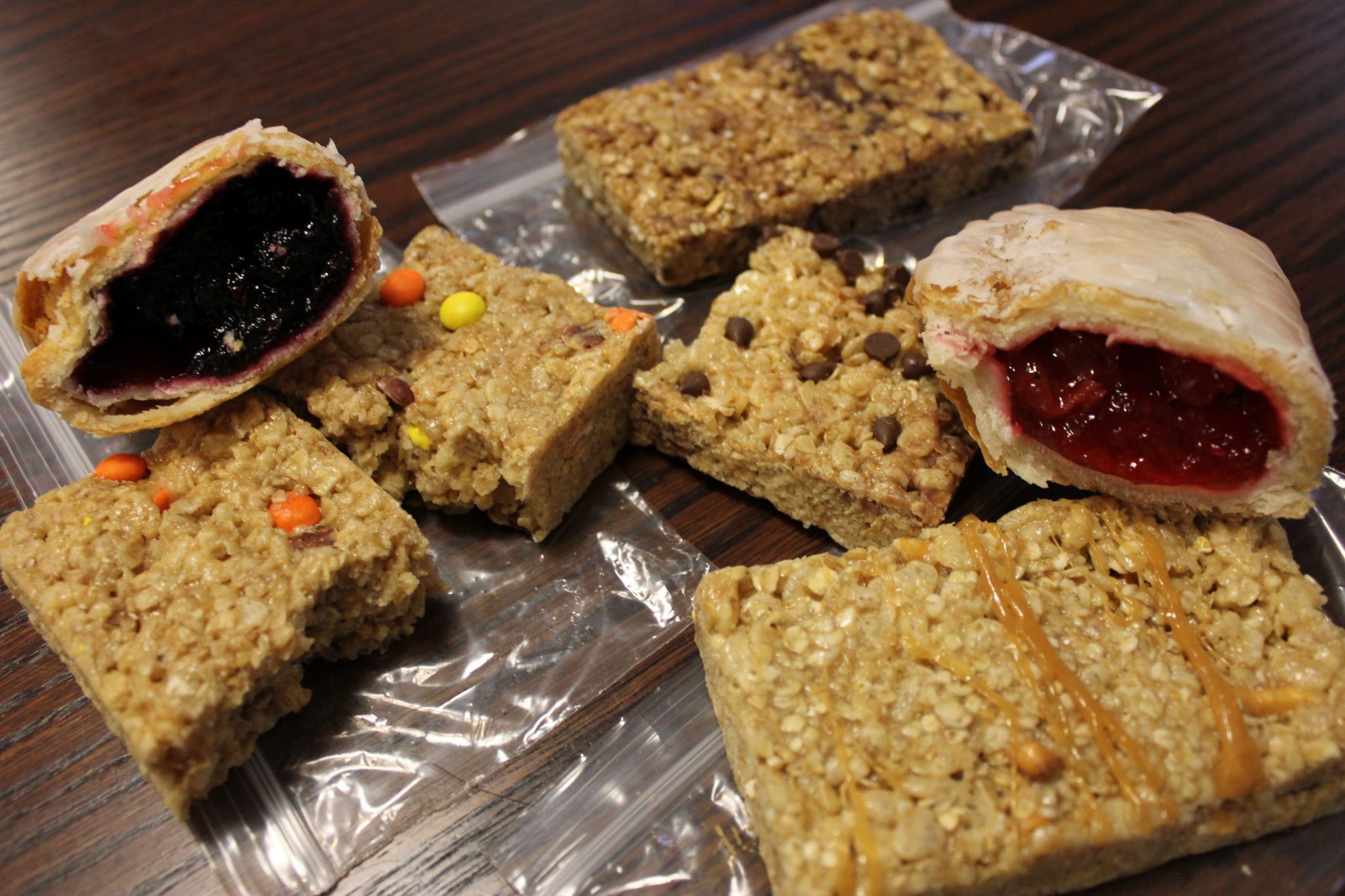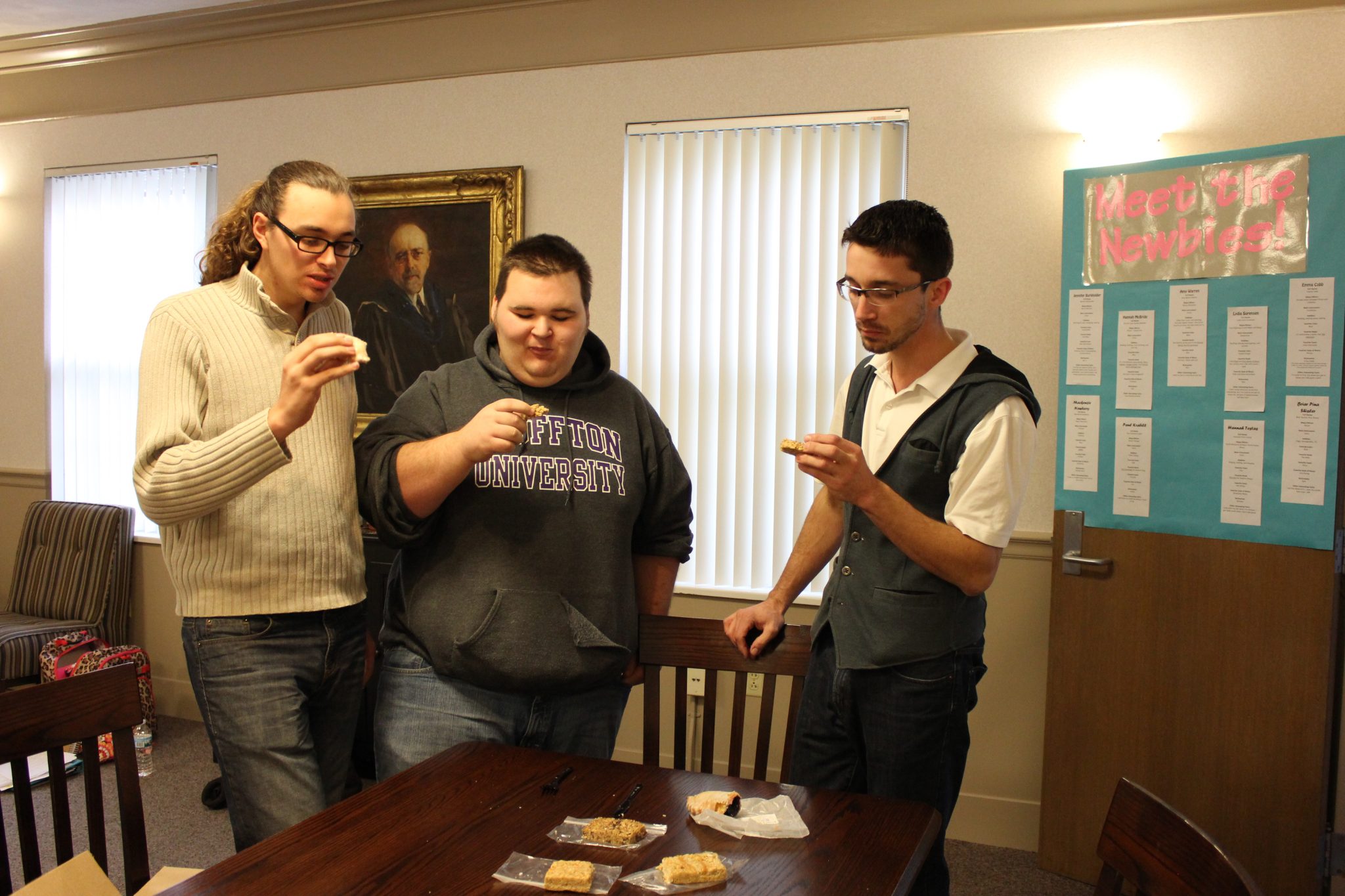
Hello everyone,
Eric Beachy is joining us for February’s Made to Create interview. The more I search for people with unique talent, the more amazed I am by what I find! Eric cares about food—what it is and how it’s made. He makes the best fry pie I’ve ever tasted. He’s also full of ideas, a prime example of a food entrepreneur.
Sheri: Hi Eric, welcome to Made to Create.
Eric: Thank you! I find an honor to be counted as one of your creative friends! It’s a pleasure to talk about food.
S: Food-making runs in your family. When did you realize you wanted to work with food too?
E: I would say there are three distinct inspirations. This might get long so bear with me. The first inspiration came when I served in Paraguay. There, we did our own butchering for the mission. When I was growing up my family raised and butchered chickens, but in Paraguay, we also did pork and beef. I remember being taken with the idea that animals can be taken apart, sliced into various cuts of meat and served at a meal. Many people see butchering as a gross, bloody endeavor, and they prefer staying away from it. I think we lose something vital when we create that distance from our food. Understand, I am not asking for people to get their hands bloodied through the butchering process; rather to view chicken as more than a flavor or a shape you buy at the supermarket. Most people understand that. What fewer understand is the distinct fulfillment when the meat on the table comes from animals you have cared for. Ach, there is more I could get into on this topic of animal care and how that extends into the slaughtering process.
The second inspiration came via friends of mine from Pennsylvania. They gave me the book The Omnivore’s Dilemma by Michael Pollan. Through that book, I was introduced to Joel Salatin and Polyface Farms. That book and Salatin’s philosophy have largely shaped how I view food and food production. I highly recommend anyone interested in holistic animal husbandry, stewardship of God’s creation, and healthy nutrition to read Pollan and study Salatin’s methodologies as practiced on his farm. I have visited Polyface and what’s unique is their “open door” policy. Anybody is free to come and walk through their farm. If you are in or near the Shenandoah Valley in Virginia and have a free afternoon, it’s a fascinating place to visit.
The third inspiration came through my family’s business. Before I left for Paraguay in 2010, I, occasionally assisted with delivering our product (honey) to local stores. In those early morning hours, the supermarkets are buzzing as bakery goods, snacks, and produce are delivered, checked in, and stocked. Over time, we got to know some of the delivery drivers for Frito-Lay, Pepsi, and other companies. This was during the recession and frequently, talk centered around the economy and how it was or wasn’t affecting sales. Many of the drivers for these snack and drink companies said they were selling just as much items as before. For someone studying nutrition, I’m sad to hear that. As a business student, it proves my neighbor’s statement: “everybody wakes up hungry.” Translation: there will always be a demand for food, no matter how bad the economy becomes.
Combine all that and you glimpse what motivated me to pursue my degree in Food & Nutrition with a concentration in Business. No, this does NOT mean I’m anticipating a career in the restaurant business. People frequently ask me this question when they hear about my major. Rather, I’m passionate about good food sustainably grown which offers optimal nutrition while healing the planet. How that translates into a career . . . well, finding out is part of the fun!
S: I agree that food will always be in demand, so why not make sure it’s good? I like your passion about this. What food projects are you working on now?

E: First, getting a job! I graduate this spring and I’m currently job hunting. Whether I stay in my field of study remains to be determined. I hope so.
My current project is the granola bars I created and sold during last semester. I have four flavors: Chocolate Chip, Dark Chocolate Espressed, Peanut Butter and Caramel Pretzel. I have four other flavors in my head that I haven’t made yet: Cherry Coconut, White Chocolate Craisin, an all-fruit one, and an all-nut bar. These could easily be converted into gluten-free varieties so in reality, I guess I have 16 flavors! Oh, the other night I did a Walnut Mint Chocolate flavor. I haven’t decided if I like the that combo or not.

In the future, I wouldn’t mind getting into developing a line of granola cereals though it seems every family has a recipe for their own homemade granola cereals. I also see marshmallows and Rice Krispie treats in need of a serious flavor overhaul, and I would love to create flavored versions of those products. More on that later.
S: Mmm, those sound delicious. What’s your dream job that involves food?
E: I would say product innovation. There is always a better way of doing things. Systems can be improved, processes optimized for better performance; the list is long. But I’m also interested in putting different foods together and analyzing how well they go together. I’ll give two examples. When I was a boy, I came home from school one day and wanted a snack. I took a slice of white bread and put Aunt Jemima’s pancake syrup on it instead of strawberry jam. Why? I wanted to see what it tasted like. I shudder now at the thought of recreating that snack. Recently, I opened the refrigerator and there was celery and a bottle of Sriracha and I asked the question, “I wonder if these go together?” On a more practical note, my dream job looks more like aquaponic greenhouses or pastured meat.
S: That’s the only way to invent new foods, really. How do food and creativity combine for you?
E: A painter sees a blank canvas and uses that to create a masterpiece, something people appreciate when they see the painting. That’s me and how I see food. Take mashed potatoes for instance. Now, few things taste more delectable than a bowl of creamy mashed potatoes. How about making them gourmet? Add some whole grain mustard to your mashed potatoes and serve with grilled pork chops. Or add some lemon zest, a mashed garlic clove, and some fresh basil and serve the potatoes with a fish dish or some grilled chicken. These are just a few of the many options.
Previously I mentioned that I think marshmallows and Rice Krispie treats need a flavor overhaul. How about caramel or chocolate flavored marshmallows? Or can they be flavored with maple syrup? With peppermint? Why not add peanut butter to Rice Krispie treats or coffee? Could you add dried fruit? Could you create a strawberry-and-peanut-butter flavored Rice Krispie treat? I don’t know either but why not try and find out? (oh, and since we are talking about flavors, can we simply agree that Pumpkin Spice is overrated?)
Or why is it that we have pecan pie but no other nut pies? Don’t misunderstand, I love a great pecan pie and my hostess makes a great pecan pie. But why not try slivered almonds? Why not experiment with walnuts or peanuts? Again, I have no idea how any of these nuts would taste when added to a pie but what holds us back from finding out?
I’m sure you have readers who’ll cite examples and/or offer recipes for flavored marshmallows, Rice Krispie treats, and alternatives to pecan pie. I’m not saying they don’t exist; I only comment that I am not seeing them being sold at stores. And if anyone wants to send samples, I welcome those also! 🙂
S: I love slivered almonds. If anyone knows of a recipe, I’d use it. (And I still like Pumpkin Spice if it has enough spice in it.) Why do you think God made food good?
E: For survival! 🙂 In all seriousness, there is much we could explore about God’s reason for making food. Such as how food heals the body, how nature is created to limit how much we can eat and more. But to answer your question, I think the reason God made food good is a simple one. Food is one way to experience art and beauty in a tangible, everyday manner. Whether it’s the sizzle of bacon being fried for breakfast, the aroma of fresh baked bread, the visual appeal of a slice of strawberry cheesecake with chocolate drizzle, the airy deliciousness of a chocolate mousse or the crunch of a ripe apple, food always engages the senses. As such, food is sensual.
 S: I think it’s amazing that God not only provides our daily food, He makes it good. One example of His great goodness. What’s one thing your study of food has taught you about God?
S: I think it’s amazing that God not only provides our daily food, He makes it good. One example of His great goodness. What’s one thing your study of food has taught you about God?
E: That His plan for food is still the best plan. The food concoctions man has created only lead to chaos and sickness. His plan is not boring. There is color and depth of flavor, creativity and life.
S: Thanks so much for joining me. I’m ready to go eat something good!
E: Excellent! Just keep it free from white sugar, high fructose corn syrup and anything related to soy.
S: I’ll try. Thank you to my readers for being here. Do you have any unusual recipes? Share them below!
I absolutely love this statement,” Food is one way to experience art and beauty in a tangible, everyday manner,” it is so true! I can’t wait to see where you interest takes you in the future Eric!
I agree with you, Richard! I think we undervalue food a lot. 🙂 Thanks for reading and commenting.